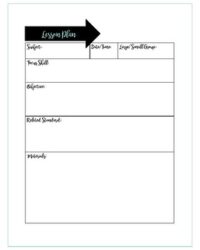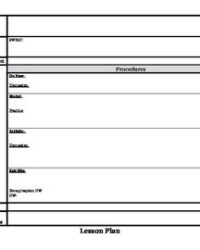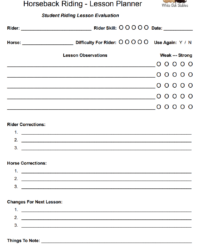Ever feel like you’re constantly searching for new ways to make learning stick for your students? It’s a common challenge in education, where the goal is always to empower students to become independent, confident learners. One incredibly effective pedagogical approach that transforms this vision into reality is the gradual release of responsibility model. It’s like teaching someone to ride a bike: you start by holding onto the seat, then let go for a few wobbles, and eventually, they’re off on their own, cruising with confidence. This model provides a structured yet flexible framework that moves students from relying on your direct instruction to mastering concepts independently.
But how do you consistently implement this powerful model across all your lessons? That’s where a well-designed gradual release model lesson plan template comes into play. Having a clear, repeatable structure not only saves you precious planning time but also ensures that every stage of the learning process is intentionally addressed, leading to deeper understanding and greater student success. It provides a roadmap for you and a clear path for your students, ensuring no one gets lost along the way.
Understanding the Core of the Gradual Release Model
The gradual release of responsibility model, often abbreviated as GRR, is built on the premise that students learn best when they are systematically guided through new concepts, slowly taking on more responsibility for their own learning. It’s a dynamic and interactive process that moves from explicit teacher modeling to independent student application. This isn’t just about lecturing; it’s about strategically building knowledge and skills brick by brick, ensuring a solid foundation at each stage.
This approach isn’t just theoretical; it’s profoundly practical. Imagine a student struggling with a complex math problem. Instead of simply telling them the answer, the GRR model encourages you to show them how, then guide them as they try, let them work with peers, and finally, give them space to solve it on their own. This layered support reduces anxiety, builds self-efficacy, and allows for differentiated instruction naturally within the lesson flow. It’s truly a game-changer for classroom engagement and academic growth.
Implementing the GRR model effectively means being mindful of the distinct phases, ensuring you provide the right type and amount of support at the opportune moment. It’s a dance between scaffolding and encouraging independence, where your role shifts from being the primary knowledge deliverer to a facilitator of learning. Let’s break down these essential stages.
Each phase serves a crucial purpose in the learning journey, progressively empowering students. Understanding these stages is the foundation for creating an effective gradual release model lesson plan template.
The “I Do”: Guided Instruction
This is where you, the teacher, take center stage. You directly model the skill or concept, thinking aloud your processes, strategies, and problem-solving steps. It’s about explicitly showing students *how* to do something, not just telling them. This phase is crucial for establishing a clear understanding of the learning target.
The “We Do”: Collaborative Learning
In this phase, you and your students work together. You might ask questions, guide discussions, or prompt students as they attempt the skill with your immediate support. It’s a chance for students to try out the new learning in a safe environment, with your constant feedback and encouragement. This is where initial misconceptions can be addressed.
The “You Do Together”: Facilitated Practice
Now, students begin to take more ownership, often working in pairs or small groups. Your role shifts to monitoring, providing specific feedback, and intervening when necessary. Students are actively collaborating, teaching each other, and deepening their understanding through peer interaction. This stage bridges the gap between guided practice and full independence.
The “You Do Alone”: Independent Application
Finally, students apply the skill or concept independently. This is where they demonstrate their mastery. It might be through a project, an essay, a problem set, or an individual presentation. While you are still available for support, the primary responsibility for learning rests with the student, showcasing their true understanding.
Crafting Your Own Gradual Release Model Lesson Plan Template
Developing a consistent gradual release model lesson plan template is like creating a personalized recipe for teaching success. It ensures that you systematically move through each phase of the model, providing scaffolding when needed and fostering independence as students gain confidence. Without a template, it’s easy to inadvertently skip a step or spend too much time on one phase, potentially hindering student progress.
A well-structured template acts as a checklist, prompting you to consider all critical elements for effective instruction. It guarantees that you’ve thought about how to introduce the concept, how you’ll guide students through it, how they’ll practice collaboratively, and how they’ll ultimately demonstrate their individual mastery. This thoughtfulness leads to more coherent and impactful lessons, benefiting both you and your students.
Remember, while a template provides structure, it should also be flexible. It’s a living document that you can adapt for different subjects, grade levels, and student needs. The key is to capture the essence of the gradual release model, ensuring that the progression from explicit instruction to independent practice is always at the forefront of your planning. Here are some essential components to include in your gradual release model lesson plan template:
- Lesson Objectives: What specific learning outcomes should students achieve? (e.g., SWBAT explain, SWBAT identify)
- Materials and Resources: What will you and your students need for each phase?
- “I Do” – Teacher Modeling: Detailed steps for direct instruction, including specific examples and think-alouds.
- “We Do” – Guided Practice: Activities or questions for collaborative work with the teacher, emphasizing student participation.
- “You Do Together” – Collaborative Practice: Strategies for small group or partner work, promoting peer learning.
- “You Do Alone” – Independent Application: Tasks or assignments for students to demonstrate individual understanding.
- Assessment: How will you measure student learning at each stage and overall? This can be formative or summative.
- Differentiation: Plans for supporting struggling learners and extending opportunities for advanced learners.
- Reflection: Space to note what worked well, what could be improved, and next steps for instruction.
Embracing the gradual release of responsibility model, bolstered by a thoughtful lesson plan template, truly transforms the learning experience. It moves beyond simply delivering content, focusing instead on building enduring understanding and crucial skills for independent learning. This strategic approach ensures that every student, regardless of their starting point, has the support and opportunity to grow into a confident, self-sufficient learner.
By investing a little time in creating or adapting a comprehensive template, you’re not just streamlining your planning; you’re investing in your students’ long-term success. It’s about equipping them not just with knowledge, but with the ability to acquire and apply that knowledge independently, preparing them for challenges far beyond the classroom walls.


